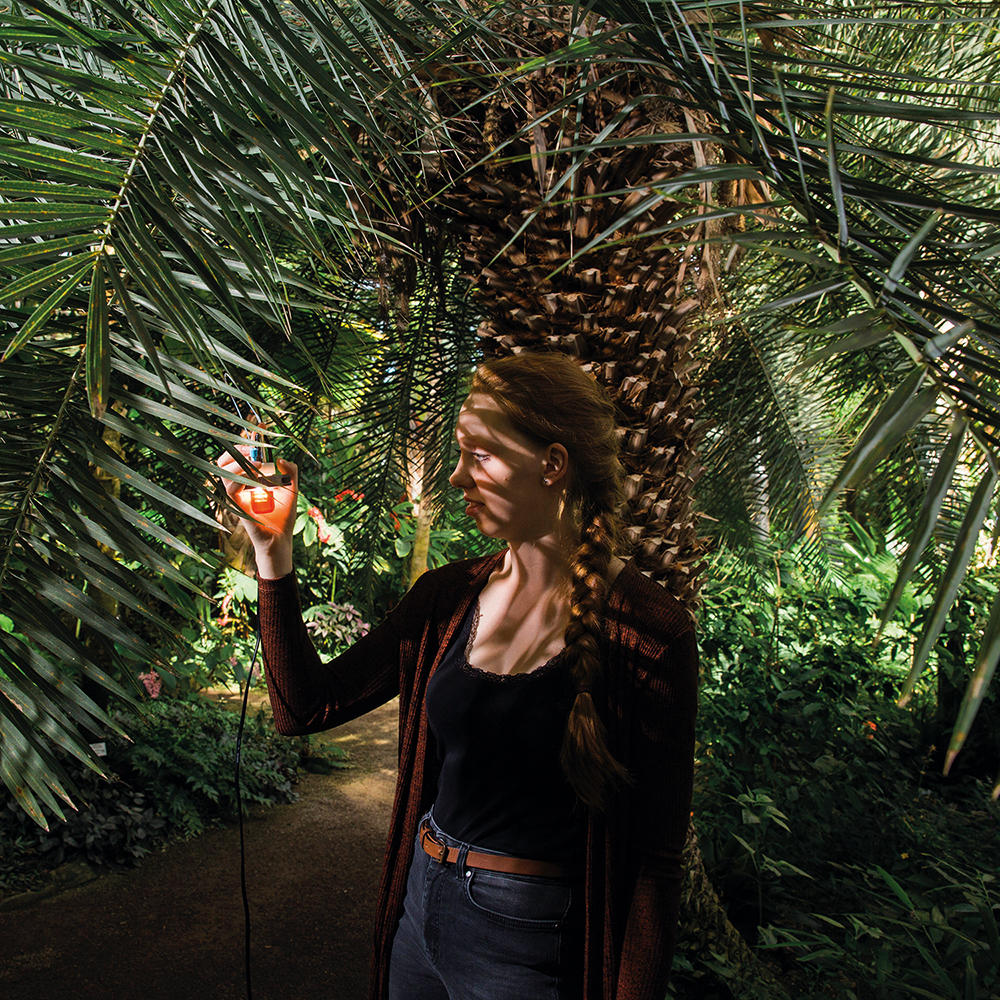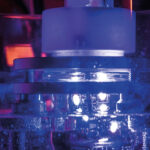- Home
- Research
- Functional Interfaces
- Research results
- Using Solar Energy at Night
Using Solar Energy at Night

17.05.2021
Researchers develop a chemical system that collects light energy and stores it on a molecule for several hours
Nature has already solved the problem: In photosynthesis, plants convert carbon dioxide into chemical compounds with the help of sunlight – and do so in such a way that the solar energy stored in chemical bonds is available even when it is dark. Researchers are trying to imitate this process using nature as a model. If it were possible to use the energy from the sun as efficiently as nature and convert it into chemical energy, global CO2 emissions could be drastically reduced. However, due to a lack of suitable storage options, solar-driven photochemistry has so far only worked in bright light.
Researchers from Leibniz IPHT and the University of Jena have now presented a molecular approach to storing solar energy that, for the first time, makes it possible for photochemical reactions to take place independently of daylight. They have developed a chemical system that collects light energy and stores it on a molecule. The molecular storage system based on a copper complex thus decouples photochemical processes from the day-night cycle.
For the first time: Light-driven photochemistry in the dark
In contrast to previous approaches based on solid-state materials, the researchers create reactive photoredox equivalents on a small molecule. This allows them not only to store light energy for a previously unattainable duration of at least 14 hours but also to regenerate it when needed.
“The dependence on brightness and darkness has so far been a major hurdle when it comes to using solar-powered photochemistry for continuous industrial production processes,” explains first author Martin Schulz, who conducts research at the University of Jena as well as in the “Functional Interfaces” research department at Leibniz IPHT. “We anticipate that our results will open up new opportunities to explore systems for solar energy conversion and storage, as well as for photo(redox) catalysis.”
High charging capacity even after several cycles
In the chemical system developed by the Jena researchers as part of the collaborative research center “CataLight”, the photosensitizer and the charge storage unit are located on the same small molecule. This eliminates the need for intermolecular charge transfer between a separate sensitizer and charge storage unit. The system retains three-quarters of its charge capacity even after four cycles.
The researchers use a copper complex and thus a molecule based on a readily available metal, whereas previous approaches have relied on rare and expensive noble metals such as ruthenium. The doubly reduced copper complex can be stored after photochemical charging and used as a reagent in dark reactions, such as the reduction of oxygen.
The Jena researchers developed the approach together with partners from the University of Ulm, the Leibniz Institute for Solid State and Materials Research Dresden and Dublin City University in the collaborative research center “CataLight” (“Light-driven Molecular Catalysts in Hierarchically Structured Materials – Synthesis and Mechanistic Studies”). Here, teams of scientists from the universities of Jena and Ulm are researching sustainable energy converters modeled on nature.
Within the framework of the SFB, another team from Leibniz IPHT recently provided another important piece of the puzzle. The researchers had succeeded for the first time in making reactive intermediates visible in ultrafast electron transfer steps (read about it in the 2019 annual report). “For our common aim of performing and understanding artificial photosynthesis, this provides a powerful tool to decipher and understand the individual steps of light-driven electron transfer reactions – under process conditions,” Martin Schulz explains. “In turn, we effectively decouple light and dark reactions by converting and storing light energy. This opens up a completely new way for us to do photochemistry: For one thing, the long storage times allow us to virtually count the electrons when we use them in the dark reaction.” For another, Schulz says, the system in principle enables “photocatalysis round-the-clock.”


